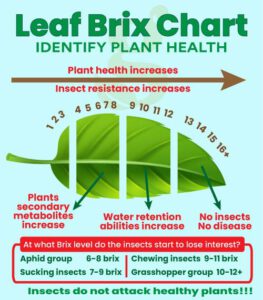
Brix in relation to crop health and quality
Brix in relatie tot gezondheid en kwaliteit van gewassen. De zoete wetenschap van Brix. Brix in relatie tot gezondheid en kwaliteit van gewassen. Brix-waarde verwijst
Water is vital to every form of life. It influences the well-being of humans, animals and plants. The effects of too much or too little moisture can have disastrous consequences. Plants in particular are very sensitive to the right water balance. A deviation in the optimal water balance will lead to negative consequences for plants sooner than it would for humans or animals. Damage to the root system and plant, caused by too little or too much moisture, will in most cases be irreparable.
A common mistake is to overwater your plants. The soil becomes saturated and clogs up, and a lack of oxygen occurs in the substrate. The plant loses vitality and life force. Leaves yellow and growth visibly decreases. The plant and its roots may start to rot and eventually die off completely.
In addition to the feed water, there is the Relative Humidity (RH). This is at least as important for the well-being of your green creation. Especially when growing indoors it is important to create an optimum climate. To achieve this you need to understand the concept of relative humidity (RH). An incorrect relative humidity (RH) can lead to various problems.
What the optimal relative humidity (RH) is depends on the plant's specific needs and the stage the plant is in. Cuttings and seedlings have needs for a much higher relative humidity (RH) than plants that are in bloom. High relative humidity (RH) in cuttings and seedlings allows them to put all their energy into developing a strong root system. While high relative humidity (RH) in flowering plants can lead to rot in the flowers.
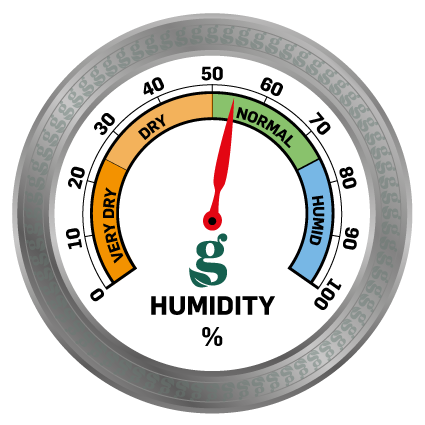
The relative humidity (RH) of the ambient air determines the Vapor Pressure Deficit (VPD - an abbreviation of the English term "Vapor Pressure Deficit"). The Vapor Pressure Deficit (VPD) is the difference between the vapor pressure inside the leaf compared to the vapor pressure of the ambient air. This difference determines the water loss of the plant. Water vapor will escape through the stomates (pores in the underside of the leaves) if the vapor pressure inside the plant is higher than that of the ambient air
Based on the Vapor Pressure Deficit (VPD), plants adjust the openings of stomata. If the ambient pressure is too high, sap flows through the plant will slow down. Even though the stomata are fully open. As a result, deficiencies of non-mobile nutrient elements will occur first. Like Calcium (Ca) for example. So a Calcium(Ca) deficiency can be caused by too high relative humidity (RH). When the relative humidity (RH) is low, the vapor pressure of the environment is lower and the plant will sweat. The plant now closes its stomates to minimize water loss and wilting. As a result, photosynthesis decreases which inhibits the growth of the crop.
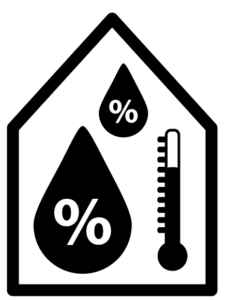
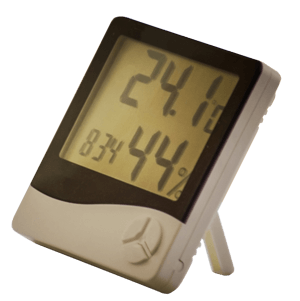
The level of relative humidity (RH) is closely related to the prevailing temperature. Warm air can contain more moisture. As soon as the temperature rises, the relative humidity drops. The air becomes drier. When the air temperature drops, the opposite happens and the air becomes more humid. You can read the values on a hygrometer. This instrument should be used with every indoor culture. The hygrometer is used in combination with a thermometer. The relative humidity (RH) is influenced by the temperature, among other things.
As the temperature increases, the air becomes drier (RH decreases).
As the temperature decreases, the air becomes wetter (RH increases).
Below is a rough overview of relative humidity.
Relative Humidity (RH) 0% There is no moisture in the air. Even cacti will struggle to survive.
Relative Humidity (RH) 10% - 20% Cacti and succulents can survive. Most other plants will suffer damage in this dry air and eventually die.
Relative Humidity (RH) 20% - 30% This is the humidity level of an average home. Some plants can survive in this, including cacti and succulents.
Relative Humidity (RH) 40% - 50% This is ideal for plants that are in the flowering stage.
Relative Humidity (RH) 50% - 60% This is ideal during the vegetative stage of plants.
Relative Humidity (RH) 60% - 80% This can be used for raising young plants and cuttings and for growing tropical plants, for example.
Relative Humidity (RH) 90% - 100% This is ideal for germinating seeds and growing some seedlings and cuttings.

Brix in relatie tot gezondheid en kwaliteit van gewassen. De zoete wetenschap van Brix. Brix in relatie tot gezondheid en kwaliteit van gewassen. Brix-waarde verwijst
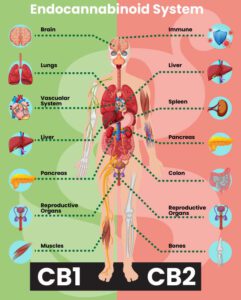
Het endocannabinoïde systeem begrijpen Een korte handleiding voor CB1- en CB2-receptoren Het endocannabinoïde systeem (ECS) speelt een fundamentele rol bij het reguleren van verschillende fysiologische
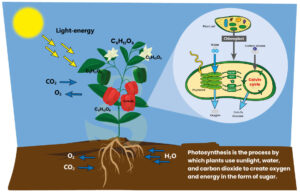
Photosynthesis Photosynthesis is the process by which green plants, algae and some bacteria convert light energy into energy in the form of glucose. This process mainly takes place

7 handy tips to prepare for the new garden season Gardening tasks when the spring jitters strike: Spring is a time of renewal and
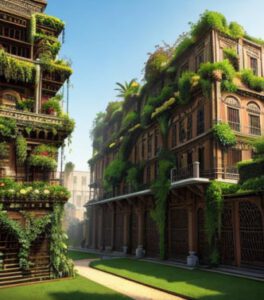
The development of hydroponic fertilisers through the ages The history of hydroponics is a story of innovation and perseverance, rooted in the quest of the
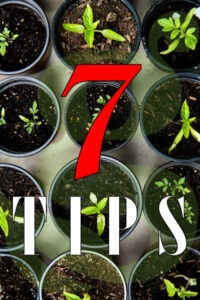
Creating a successful indoor grow involves more than just light and water. Here are 7 tips to boost your indoor garden.
Brix in relatie tot gezondheid en kwaliteit van gewassen. De zoete wetenschap van Brix. Brix in relatie tot gezondheid en kwaliteit van gewassen. Brix-waarde verwijst
Het endocannabinoïde systeem begrijpen Een korte handleiding voor CB1- en CB2-receptoren Het endocannabinoïde systeem (ECS) speelt een fundamentele rol bij het reguleren van verschillende fysiologische
Photosynthesis Photosynthesis is the process by which green plants, algae and some bacteria convert light energy into energy in the form of glucose. This process mainly takes place
7 handy tips to prepare for the new garden season Gardening tasks when the spring jitters strike: Spring is a time of renewal and
The development of hydroponic fertilisers through the ages The history of hydroponics is a story of innovation and perseverance, rooted in the quest of the
Creating a successful indoor grow involves more than just light and water. Here are 7 tips to boost your indoor garden.
Home » How important is Relative Humidity.

Because growing your own is a craft. It takes time, energy, focus, attention, maybe even love. At your own pace, in your own environment. You are the creator.